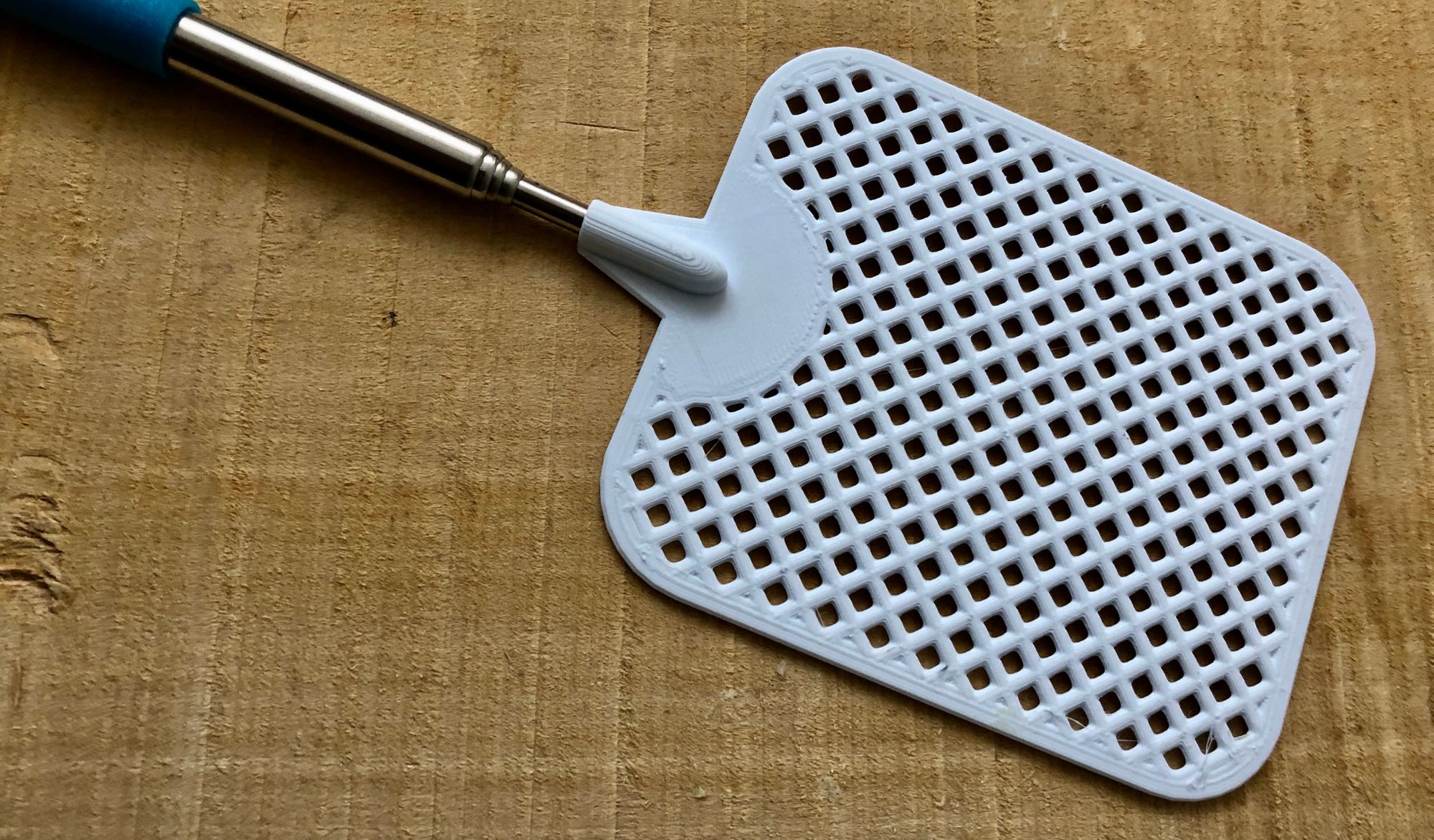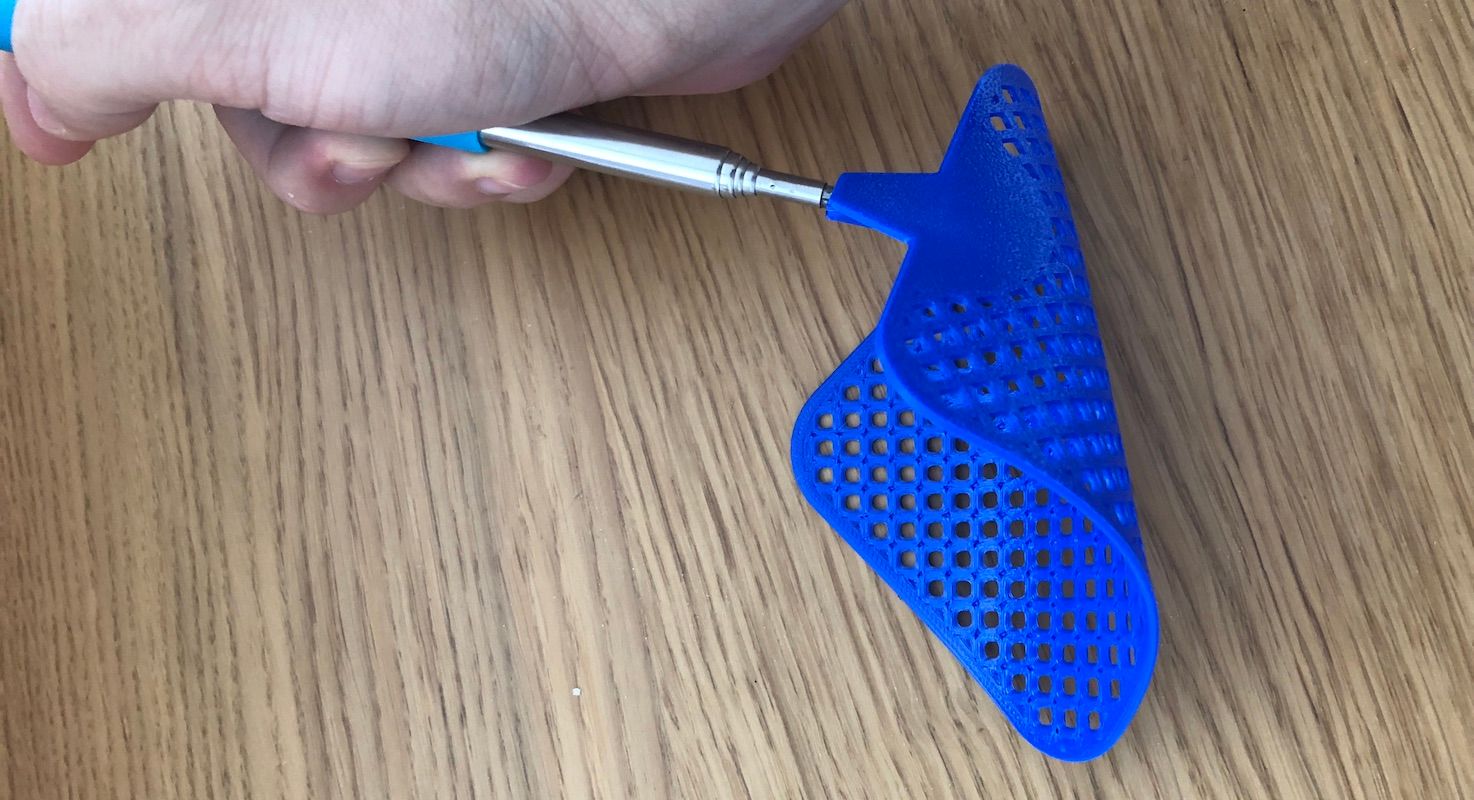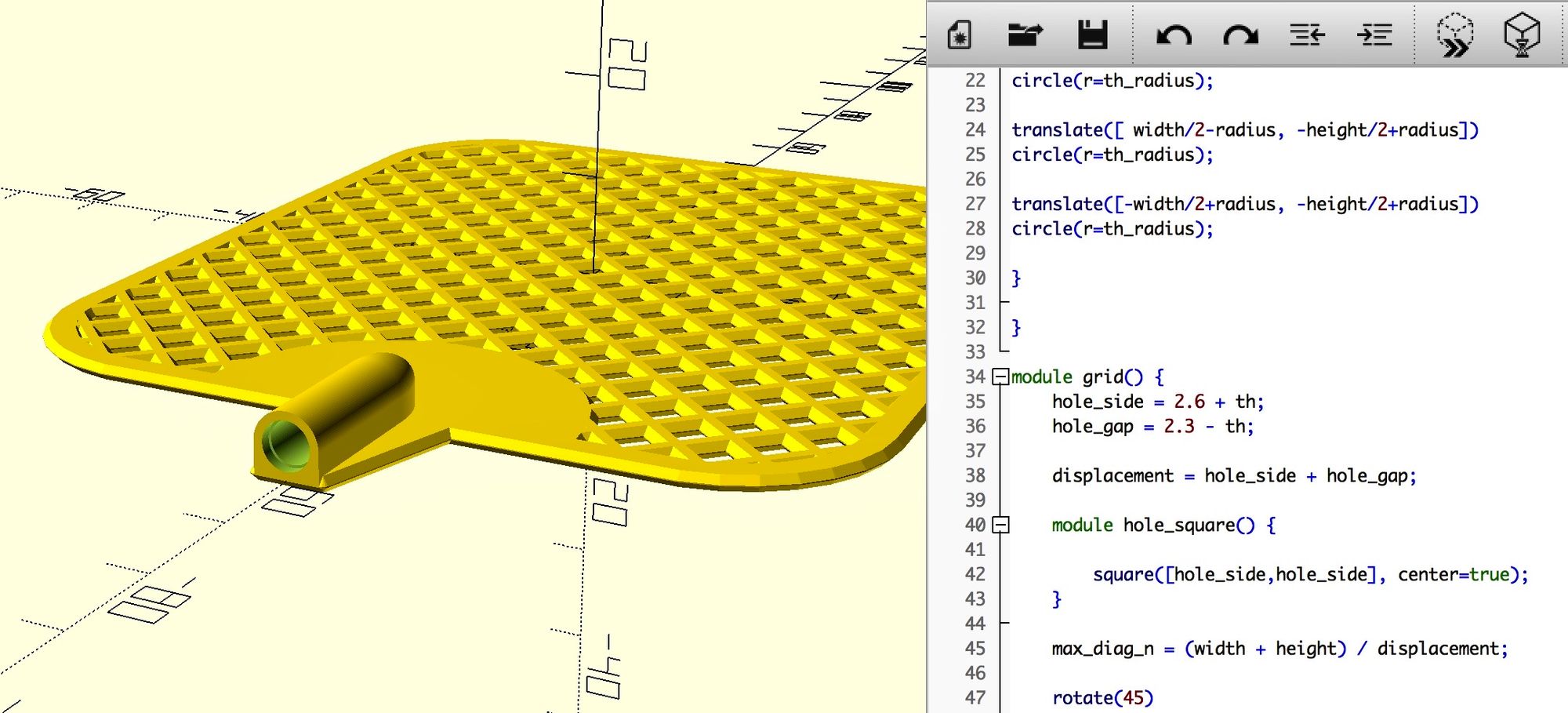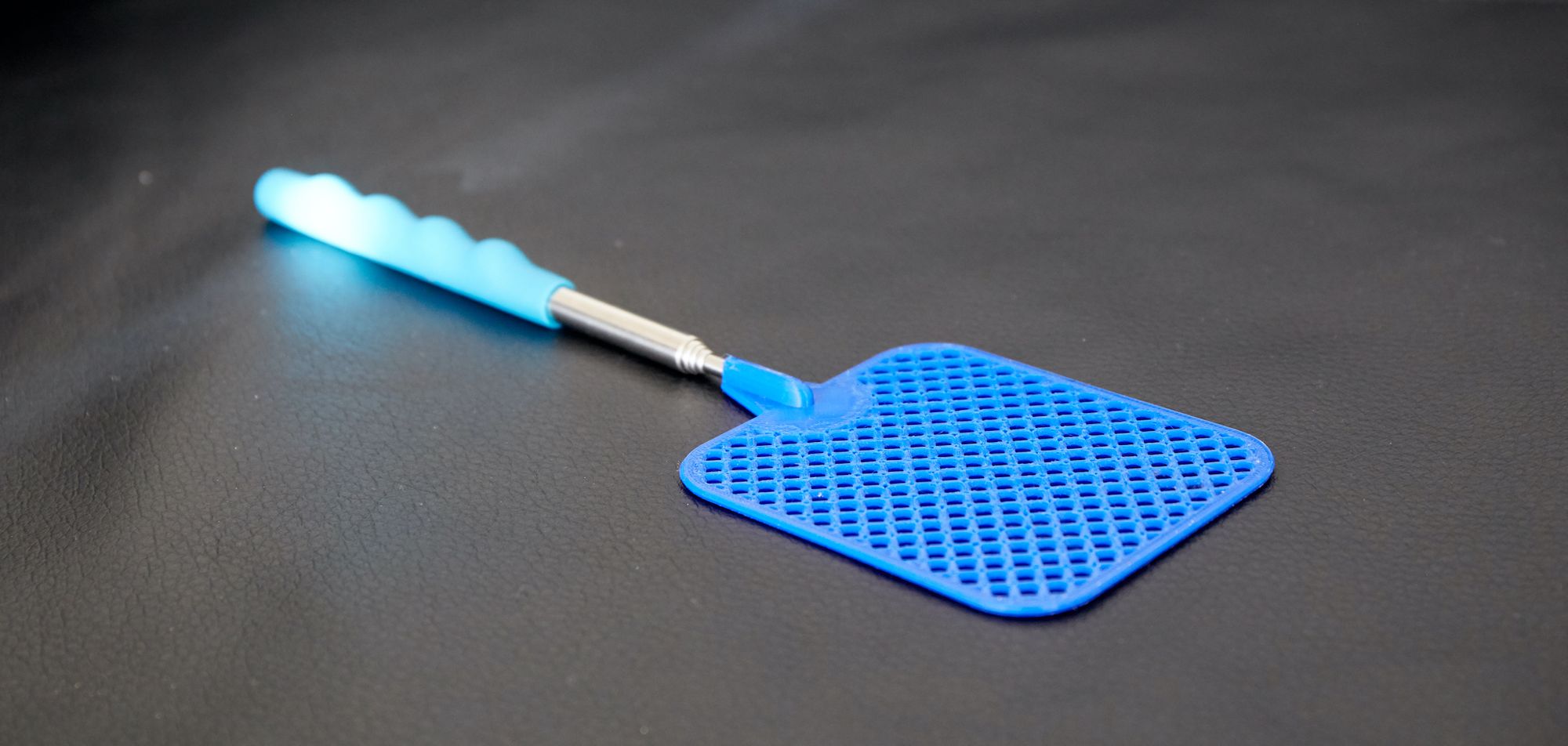Nowadays, my friends would tell you that I already bought at least half of the things that you can find on AliExpress. But some years ago, I was just starting to shop that the Chinese online hyper store. I was cautious by ordering only super cheap products, and precisely tracking if they arrive. At that time, I bought a flyswatter for $1.14.

It was a simple swatter with a plastic mesh and a telescopic handle. I killed flies with it, and I was happy 🤠. But after a couple of months, the plastic mesh cracked. And it's ok because I used it for a couple of months and paid $1.14 (in Switzerland you would pay at least $10 for such a thing).

But I don't surrender just like that, because it's about plastic — I can print it. I measured the original mesh with calipers and designed a clone in OpenScad. I printed the new swatter mesh in PETG because it has good impact resistance.

The new mesh from PETG resisted about one or two impacts and then snapped worse than the original. After some time, I bought a flexible filament (Formfutura FlexiFil; shore hardness 45D) and used it to print yet another version of the flyswatter mesh. The filament is on the stiffer side of the flexible materials spectrum, so the swatter is still hitting flies well. At the same time, it resembles a rubber, so it does not crack.

Since then, I used the swatter for 2 years, I killed many flies, and the ingenious killing device still works. Now I wonder if polypropylene would be a better material for the 3D printed mesh. It's stiffer than the flexible material that I used. However, it's still flexible, does not crack, and does not deform easily. But I have many more things in my "To Print" list, and while the swatter works I'm not going to change it 😝

